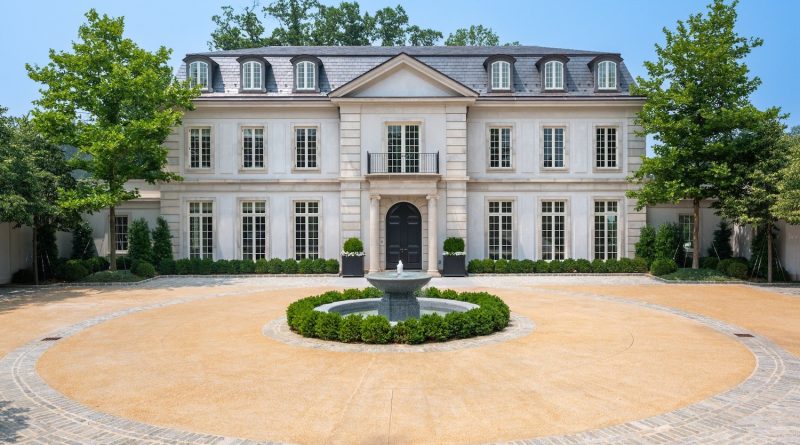Washington’s luxury real estate sees ‘Trump Bump’ in sales
In the weeks following the presidential election, Washington, D.C. experienced a significant rise in luxury real estate activity. This surge, often called the “Trump Bump,” began with several high-profile purchases and has since developed into a broader trend, with real estate agents reporting increased demand and tightening inventory across the city’s most exclusive neighborhoods.
The luxury segment, defined by properties priced at $5 million and above, typically sees moderate seasonal movement. However, in November 2024 alone, eight homes in this range were sold, generating nearly $68 million in total value. This marked one of the strongest months on record for D.C.’s high-end market.
While political transitions frequently trigger real estate interest in the capital, the volume and speed of these transactions surprised even long-standing industry professionals. The Trump administration’s return attracted a new wave of appointees, consultants, and business leaders, many of whom sought immediate real estate acquisitions close to federal power centers.
The election outcome also brought renewed confidence among affluent buyers. Policy continuity favoring tax reform and regulatory rollbacks encouraged investment. For many of these individuals, buying property in Washington served both practical and symbolic purposes.
A new wave of political elites is reshaping the high-end property scene
The current crop of luxury buyers reflects the changing composition of the new political elite. These individuals are often aligned with the administration, have strong financial backing, and bring with them an expectation of privacy, prestige, and strategic positioning.
Howard Lutnick, CEO of Cantor Fitzgerald and President Trump’s nominee for commerce secretary, made headlines by purchasing a $25 million French château-style mansion in the Massachusetts Avenue Heights neighborhood. The property was previously owned by Fox News anchor Bret Baier. The transaction set a new record for residential sales in the D.C. metro area.
Jacob Helberg, a senior advisor on tech policy and newly appointed Under Secretary of State for Economic Growth, Energy, and the Environment, acquired a $7 million townhouse in Kalorama. Known for its mix of old-world charm and security, Kalorama remains a top choice for high-ranking officials and international dignitaries.
JD Vance also made real estate news by selling his home in Alexandria, Virginia, for $1.87 million. The buyer, Christopher Garcia, served under the Trump administration. The home sold for $172,000 over the asking price and was off the market in just a few days.
Landmark sales that define this new era of real estate in the capital
Lutnick’s $25 million mansion set a high-water mark for price and prominence. His decision to purchase from a Fox News personality carries its own symbolic weight, underscoring the overlap between media, finance, and government. The property features classic French architectural elements, a gated driveway, and significant square footage, all located in one of the city’s most exclusive enclaves.
Helberg’s townhouse acquisition in Kalorama adds to the neighborhood’s history of hosting powerful figures. With previous residents including the Obamas and members of the Trump family, the area continues to serve as a residential base for those involved in high-level policy.
Vance’s over-asking sale, while smaller in scale, reflects the speed and intensity of the current market. The buyer’s political background adds to the narrative that this is more than a housing trend. It is a reshuffling of capital and identity within the elite class of Washington.
Collectively, these sales reflect a broader repositioning within the city. Buyers are not merely purchasing assets. They are investing in proximity to influence, social capital, and public visibility.
Can the market sustain its momentum or is this a post-election blip?
With the Trump Bump firmly established, many real estate professionals are asking whether this trend has staying power. Several indicators suggest it might.
First, the demand is driven by buyers who are financially insulated from interest rate swings or short-term market corrections. These are cash-heavy individuals making long-term strategic purchases. Their decision-making is more closely tied to political alignment and career positioning than to economic forecasts.
Second, inventory remains constrained. Zoning rules and preservation regulations limit new development in core luxury neighborhoods. This scarcity supports price resilience and reduces volatility. Even during downturns, top-tier properties in Kalorama and Massachusetts Avenue Heights tend to retain their value.
Still, broader risks persist. Rising interest rates, persistent inflation, and unpredictable policy shifts could affect the market over time. A change in public sentiment or a shift in federal hiring could cool demand, particularly if confidence among new appointees begins to fade.
The market also faces criticism around equity and affordability. The concentration of wealth into a handful of neighborhoods risks increasing the city’s already pronounced housing gap. Middle-income buyers find themselves pushed further from the city center, and long-time residents are contending with escalating property taxes.
Developers are racing to modernize historic properties in ways that appeal to political elites. These projects often involve combining old-world exteriors with high-tech interiors. Privacy and security features have become mandatory, not optional.
Investors see Washington as a stable and increasingly global market. Where once the capital lagged behind cities like New York or San Francisco in attracting high-net-worth property buyers, it now offers a unique combination of influence, tradition, and financial upside. Foreign interest is also picking up, especially from buyers in Europe and the Middle East.
However, communities across the city are raising concerns about the widening gap between luxury and livability. While the high-end market thrives, affordable housing initiatives remain underfunded. Many neighborhoods risk becoming bifurcated, with little socioeconomic crossover.
Sources:
Fox Business
Fortune
Photo by Studio Trejo
